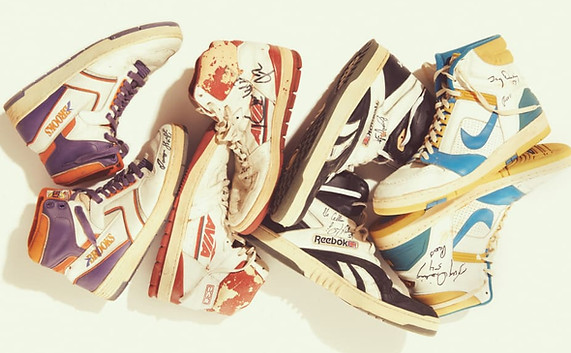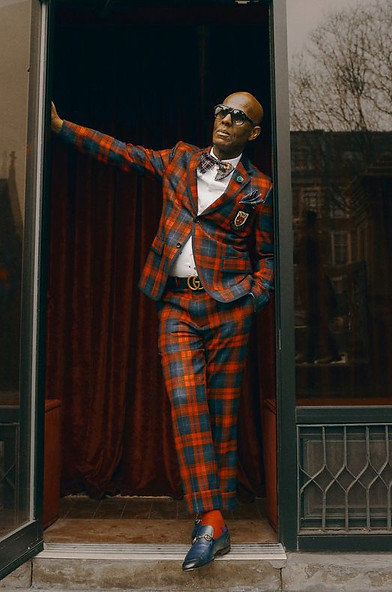
How Black Culture Popularized Some of Your Favorite Trends
Words by Zheka Chyzhykova
Art by Krischelle Cadao
In the past month, the world has witnessed a revival of protests for racial equality. What started in the US as a result of police brutality against George Floyd has now sparked a worldwide conversation on the political and societal structures, which have perpetuated racism for centuries. While being inherently racist in its foundation, Western culture often adopts trends that originated in the Black community. To remind others and draw attention to these issues, we present to you five trends that were popularized by Black-owned brands and icons, and grew to beautifully impact fashion forever.
High-End Streetwear

Photo: Hip Hop Scriptures

Photo: Vogue / Matthew Jordan Smith
Wearing sneakers and tracksuit pants in a casual setting originated in contemporary Black culture. After seeing the potential of this new fad, bigger designer houses like Chanel started incorporating it into new seasons. This brought popularity to Black-owned brands such as FUBU, Cross Colours, and Karl Kani that have used this bold style since their foundation. Witnessing the rising marketability of these brands, white-owned companies such as Ralph Lauren and Tommy Hilfiger jumped onto high-end streetwear and presented the style as their own. Today, it is common to see tracksuits and streetwear in music videos, in the first line of fashion shows, and on popular influencers. Although now presented in new and fresh approaches, it is still important to appreciate the impact of this trend and its true origins.
Sneaker Culture

Photo: Daily Beast / Rizzoli New York

Photo: InStyle / Tim Saccenti
Going off streetwear, it is necessary to remind ourselves of one of the most demanding and popular trends of the 2000s - sneakers. From Yeezy Boosts to Air Jordans, sneakers are one of, if not the, most noticeable elements of an outfit. Since their invention in the 19th century, they have been conveying ideas about one’s identity and class. In the 1970s, New Yorkers involved in basketball and hip-hop culture started adopting sneakers from sports equipment to a tool of cultural expression. The progenitors of sneaker culture were also predominantly kids of color. The rising use of sneakers in an every-day setting has pushed elite fashion designers, such as Prada and Gucci, to further the trend at a premium cost and by introducing a variety of customization options.
The Bucket Hat

Photo: Affair Post Magazine

Photo: Esquire Magazine
This trend was originally used for practical purposes by Irish farmers and fishermen in the 1900s to protect themselves from the sun and rain. Later on in the 60s, a stiffer and more elegant version of the hat was adopted by ladies as an accessory. However, the first time the bucket hat was truly introduced to street style culture was in the 80s, supposedly by Big Bank Hank. He was the first celebrity rapper to wear the accessory during a performance in 1979. The trend was later picked up by Jay Z and other popular rappers. Today, a bucket hat remains a major part of fashion runways, often featured by designer houses such as Prada and Fendi.
Logomania

Photo: GQ Style / Gabriela Celeste

Photo: Gucci x Dapper Dan / Ari MarcoPoulos
There are quite a few arguments about the origin of logomania in fashion. Many might immediately think of Louis Vuitton, a company that has been using their logo as their main pattern since 1892. Others might consider Gucci, another brand that has incorporated their logo as an eye-catching element since the 1960s. Although these suggestions might be true, it is important to acknowledge Dapper Dan, the American fashion designer, while remembering the rise of this trend. In the 1980s, Dan began working in his boutique in Harlem, New York. He would illegally screen print logos of brands like Gucci, Louis Vuitton, and Fendi over leather, and style them in new and eccentric ways. In addition to clothes, he would also print logos on furniture covers, curtains, and car interiors. His boutique was widely supported by the American rap community and would dress the likes of Jay Z, Floyd Mayweather, and many others. In 1989, he was eventually arrested by the police. The need for designer-inspired clothing was later filled in by fast-fashion commercial brands. Ironically, in 2017, Gucci and Dapper Dan released an anticipated collaboration - combining Harlem style and Italian high fashion.
Gold Hoops & Chunky Jewelry

Photo: Kingsmen Media Group

Photo: Yonata Solomon
Today, it is impossible to ignore the gold hoops and chunky jewelry trend. Brandy Melville constantly produces chains and necklaces, all the thrifters are obsessed with giant hoops, and generally, people of all ages can be found wearing them. The origin of the trend is debatable. When looking back at history, you could find that it was worn by many cultures, from ancient Sumerian women in 2500 B.C to pirates in the 1650s.
In the 1960s, black women started using gold hoops during the Black Power movement, as a part of their streetwear expression. In the next following decades, gold hoops became more prevalent in the hip-hop, club, and rap scene. The influence of this fashion detail made chunky jewelry and oversized hoops a style staple. For the Black community, gold hoops mean more than just a trend; they represent freedom, give a sense of unity, and have become integral to the culture. While other communities also use gold jewelry, it is necessary to recognize the impact that the Black Power movement had on bringing this accessory to mainstream media.
Today, it is crucial to recognize the impact of all the cultures that today’s Western society is built on. Always remember the origin of your favorite trends and be aware of the true history behind them.
Real fashion is more than just aesthetics. For many, it’s a movement. An expression. A reflection of history. A way of life.
JULY 1, 2020
